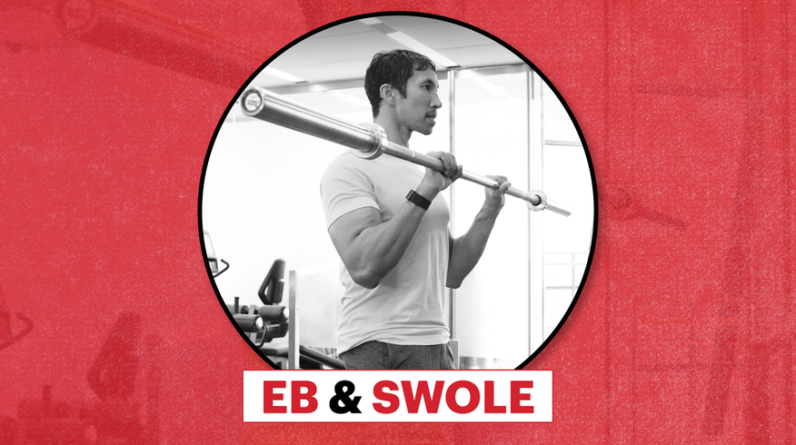
For a good reason, fitness has become popular over the last several years. It not only improves your physical condition, but it can also improve your mental state. In this blog article, we will provide you with details on what fitness is and what benefits it can have for you. We’ll also discuss some of the best ways to start working out and see results fast.
What is Fitness?
Fitness is a term used to describe a person’s physical condition and can be considered an umbrella term that includes health, fitness, and wellness. Fitness encompasses all aspects of one’s physical well-being, from general health to specific athletic abilities.
There are many definitions of fitness, and it is not just a physical attribute. Fitness can also be defined as having enough energy, being mentally alert and focused, having good self-esteem and mental well-being, adequate restorative sleep, handling stress, enjoying healthy foods and beverages, etc.
Physical fitness has many benefits, including reducing the hazard of infections like coronary illness and stroke, improving your sense of well-being, enhancing your moods and preventing depression, helping you maintain your weight in the face of changing eating habits or exercise regimens, increasing strength and endurance for activities such as running or biking, aiding in rehabilitation after injury or surgery.
Many different types of exercise can be done to achieve fitness goals. Some examples include aerobic exercise (such as walking or running), resistance training (such as lifting weights), balance exercises (such as yoga or Pilates), aquatics (such as swimming or water aerobics), sport-specific activities (such as tennis or golf), etc. The type of exercise you do is up to you – you don’t need any special equipment!
One thing to keep in mind when starting is to increase your intensity gradually.
Types of Fitness Programs
There are many fitness programs to choose from, depending on your desire. There are cardio programs, strength training programs, yoga programs, and more.
A decent starting point is a cardio program if you desire to shed pounds. Cardio helps your body burn calories and allows you to lose weight by creating a calorie deficit. A common type of cardio is running or walking. If you want to tone your body, try a strength training program. Strength training helps build muscle mass which can help reduce fat storage in your body and help improve your overall health. A popular type of strength training is weightlifting.
If you are new to fitness, finding an exercise program that fits your lifestyle and goals is essential. There are plenty of beginner-friendly workouts available online or at your local gym. Once you find the right fit for you, stick with it! The longer you keep up with a fitness routine, the better results you’ll see.
How does fitness help you achieve your goals?
Fitness is a term used to describe any activity that can help you achieve your goals. Fitness can be physical, such as running or biking, or mental, such as practicing mindfulness. Both types of fitness are essential for overall health and well-being.
Physical fitness can help you improve cardiovascular health, build muscle mass, also lessen the gamble of persistent illnesses like diabetes. Mental wellness can help you learn new skills, stay focused and motivated, and increase self-confidence.
Many types of fitness programs are available to fit everyone’s needs. If you need more time to exercise regularly but want to benefit from the health benefits of fitness, try working out in short bursts every few days. Or try one of our favorite workouts: the 30-minute cardio challenge!
What are the benefits of regular fitness?
Regular fitness gives you many benefits, such as improving your overall health, weight loss, inflammation, and stress levels. Here are five of the most important benefits of regular fitness:
1. Improved Overall Health
Fitness can improve your overall health by helping to reduce inflammation and improve your cardiovascular health. Chronic inflammation is linked to several chronic diseases, such as heart disease, cancer, and Alzheimer’s. In addition, being physically active can help you lose weight and improve your overall well-being.
2. Weight Loss
One of the main benefits of fitness is weight loss. Regular exercise can help you burn calories and reduce your body fat percentage, leading to bigger muscles and healthier body composition.
3. Reduced Inflammation
Inflammation is a common problem that can lead to numerous diseases, including obesity, heart disease, arthritis, and multiple sclerosis. Exercise effectively reduces inflammation in the short term (after just a few weeks) and the long time (over the years).
4. Reduced stress Levels
Exercise is an effective way to reduce stress levels, leading to better mental health outcomes. In addition, exercise is an effective way to boost self-esteem, which can improve overall well-being.
5. Better Mental Health Outcomes
Being dynamic has been displayed to have positive mental health outcomes such as improved moods, increased optimism, reduced.
What is fitness in the short essay?
There is no single response to this inquiry, as fitness depends on an individual’s goals and needs. However, some general ideas about what constitutes fitness include staying healthy and active, having a solid core and strong muscles, and being able to move quickly and freely. Fitness can be measured in many ways, but one standard method is using a BMI (body mass index) calculator or calculating how many calories a person burns in a day.
People who are physically fit have stronger cores and muscles, which allows them to move more quickly and easily. They also have more stamina and endurance because they don’t use up energy as soon as people who are less fit. In addition, being physically fit can help people maintain good health overall. People who are physically fit often have lower rates of heart disease, diabetes, stroke, cancer, arthritis, and other chronic diseases.
Why is fitness a critical value?
Fitness is important because it improves overall health. Regular exercise can help decrease the gamble of creating sicknesses, for example, cancer, heart disease, and stroke while improving mood and mental well-being. Fitness can also help you maintain a healthy weight, improving your overall health and appearance. In addition to these benefits, fitness can boost your self-esteem and create positive social circles.
What are the seven factors of fitness?
Many factors go into being fit. Here are the seven most important ones:
1. Cardiovascular Fitness
This includes your heart and lungs’ ability to work correctly. A healthy cardiovascular system can help you maintain a healthy weight, avoid diseases, and extend your life. To be fit, you need to have good aerobic capacity (the ability to use oxygen to fuel your muscles) and anaerobic capacity (the ability to use stored energy from sugar). You can measure your aerobic fitness with a VO2 max test or by doing an exercise such as the treadmill sprint test. You can do the Wingate anaerobic test, or the shuttle run test to measure your anaerobic capacity.
2. Muscle Strength
Muscle strength is essential for balance, flexibility, and movement. Building muscle strength requires time (about 16 weeks for women and 24 weeks for men), proper supplementation, and consistent effort. The three main types of muscles are fast twitch (used for short-term bursts of energy), slow twitch (used for longer-term endurance activities), andendonuclei (responsible for contracting). Different exercises target each type of muscle fiber: push-ups target fast twitch muscles; squats target slow twitch muscles; lunges target the quadriceps, and tricep dips target the pecs. You can also increase muscle strength by working on balance tasks such as standing on one foot in front of a stability ball or balancing on one.
What are the five things of fitness?
1. Proper Nutrition
2. Strength Training
3. Cardio Training
4. Yoga
5. Mindful Movement
What are the five parts of fitness?
There are five main components to fitness: cardiorespiratory, musculoskeletal, neuromuscular, joint mobility, and integrative. To be fit, all five should be exercised regularly.
Cardiorespiratory Fitness
The first part of fitness is cardiovascular health. This includes things like getting your heart rate up and sweating. Cardiovascular exercise helps improve circulation and help remove toxins from the body, and it also helps lower blood pressure and LDL cholesterol levels.
Musculoskeletal Fitness
Next is muscular fitness. Muscles need to be worked to get more robust and flexible. Strength training helps build muscle mass, while flexibility training improves the range of motion and can help reduce joint pain.
Neuromuscular Fitness
The final two parts of fitness deal with the nervous system and the muscles themselves. Neuromuscular Fitness deals with how well your muscles work together as a unit, while neural strength training has been shown to improve memory and thinking skills.
Joint Mobility
The last component of fitness is joint mobility. This includes exercises that improve the range of motion at the joints, such as yoga or Pilates. Improving your joint mobility can help reduce inflammation and joint pain over time.





